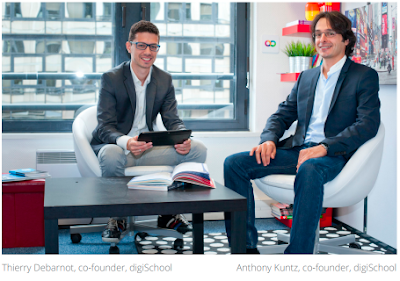
Sarah Pinner’s passion to reduce waste began as a child when she would reach over and turn off her sibling’s water when they were brushing their teeth. This passion has fueled her throughout her career, from joining zero-waste grocery startup Imperfect Foods to co-founding Beni, an AI-powered browser extension that aggregates and recommends resale options while users shop their favorite brands. Together with her co-founder and Beni CTO Celine Lightfoot, Sarah built Beni to make online apparel resale accessible to everyday shoppers in order to accelerate the circular economy and reduce the burden of fashion on the planet.
Sarah explains how the platform helps connect shoppers to secondhand clothing: “Let’s say you’re looking at a Nike shoe. While on the Nike site, Beni pulls resale listings for that same shoe from over 40 marketplaces like Poshmark or Ebay or TheRealReal. Users can simply buy the resale version instead of new to save money and purchase more sustainably. On average, Beni users save about 55% from the new item, and it’s also a lot more sustainable to buy the item secondhand.”
Beni was one of the first companies in the recommerce platform software space, and the competitive landscape is growing. “The more recommerce platforms the better, but Beni is ahead in terms of our partnerships and access to data as well as the ability to search across data,” says Sarah.
How Beni Uses AI
AI helps Beni to ingest all data feeds from their 40+ partnerships into Beni’s database so they can surface the most relevant resale items to the shopper. For example, when Beni receives eBay’s feed for a product search, there may be 100,000 different sizes. The team has trained the Beni model to normalize sizing data. That’s one piece of their categorization.
“When we first started Beni, the intention wasn’t to start a company. It was to solve a problem, and AI has been a great tool to be able to do that,” says Sarah.
Participating in Google for Startups Accelerator: Circular Economy
Beni’s product was built using Google technology, is hosted on Google Cloud and utilizes Vision API Product Search, Vertex AI, BigQuery, and the Chrome web store.
When they heard about the Google for Startups Accelerator: Circular Economy program, it seemed like the perfect fit. “Having been in the circular economy space, and being a software business already using a plethora of Google products, and having a Google Chrome extension - getting plugged into the Google world gave us great insights about very niche questions that are very hard to find online,” says Sarah.
As an affiliate business in resale, Beni’s revenue per transaction is low—a challenge for a business model that requires scale. The Beni team worked one-on-one with Google mentors to best use Google tools in a cost-effective way. Keeping search results relevant is a core piece of the zero-waste model. “Being plugged in and being able to work through ways to improve that relevancy and that reliability with the people in Google who know how to build Google Chrome extensions, know how to use the AI tools on the backend, and deeply understand Search is super helpful.” The Google for Startups Accelerator: Circular Economy program also educated the team in how to selectively use AI tools such as Google’s Vision API Product Search versus building their own tech in-house.
“Having direct access to people at Google was really key for our development and sophisticated use of Google tools. And being a part of a cohort of other circular economy businesses was phenomenal for building connections in the same space,” says Sarah.
Google for Startups Accelerator support extended beyond tech. A program highlight for Sarah was a UX writing deep dive specifically for sustainability. “It showed us all this amazing, tangible research that Google has done about what is actually effective in terms of communicating around sustainability to drive behavior change,” said Sarah. “You can’t shame people into doing things. The way in which you communicate is really important in terms of if people will actually make a change or be receptive.”
Additionally, the new connections made with other circular economy startups and experts in their space was a huge benefit of participating in Google for Startups Accelerator. Mentorship, in particular, provided product-changing value. Google technical mentors shared advice that had a huge impact on the decision for Beni to move from utilizing Vision API Product Search to their own reverse image search. “Our mentors guided us to shift a core part of our technology. It was a big decision and was one of the biggest pieces of mentorship that helped drive us forward. This was a prime example of how the Google for Startups Accelerator program is truly here to support us in building the best products,” says Sarah.
What’s next for Beni
Beni’s mission is straightforward ‐ they’re easing the burden for shoppers to find and buy items second hand so that they can bring new people into resale and make resale the new norm.
Additionally, Beni is continuing to be built into a search platform, searching across second hand clothing. Beni offers their Chrome extension on desktop and mobile, and they will have a searchable interface. In addition to building out the platform further, Beni is looking at how they can support other e-commerce platforms and integrate resale into their offerings.
Learn about how to get involved in Google accelerator programs here.
 Posted by Lillian Chen – Global Brand and Content Marketing Manager, Google Accelerator Programs
Posted by Lillian Chen – Global Brand and Content Marketing Manager, Google Accelerator Programs








